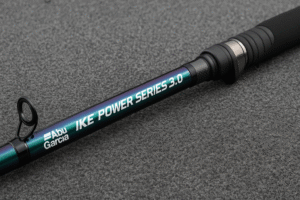Catch More Fish with Crankbaits
What is a crankbait, and why is it one of the most popular fishing lures in the world? A crankbait is a fishing lure designed to look and act like a real fish. It’s known for its wobbly, diving action that drives predators like bass, pike, and walleye wild. Anglers love crankbaits because they’re easy to use, work in almost any water, and can fool even the smartest fish. Whether you’re fishing from a boat, a dock, or the shore, crankbaits are a go-to tool for catching big fish.
Crankbaits are usually made of hard plastic or wood and painted in bright, flashy colors to catch a fish’s eye. Some are shaped like minnows, while others look like crawfish or other prey. The key feature of a crankbait is its “lip” or “bill,” a flat piece of plastic at the front of the lure. When you reel it in, the lip pushes against the water, making the lure dive deeper and wobble side to side. This movement mimics a hurt or fleeing fish, which makes predators think, “Easy meal!” That’s why crankbaits are so effective—they trigger a fish’s instincts to attack.
These lures are popular because they’re versatile. You can use them in lakes, rivers, ponds, or even the ocean. They come in sizes as small as your thumb or as long as your hand, and they’re designed to swim at different depths. Shallow-diving crankbaits stay near the surface, while deep-divers can plunge 25 feet or more. Lipless crankbaits sink fast and vibrate when you reel them in, making them perfect for muddy water or thick weeds. Whether you’re targeting bass hiding under a dock or walleye lurking near the bottom, there’s a crankbait for the job.
Fish are naturally drawn to movement, color, and flash. Crankbaits take advantage of this by combining all three. Their wobbling action creates vibrations in the water that fish can sense with their lateral lines—a kind of “sixth sense” that detects movement. Bright colors like red, orange, or chartreuse stand out in murky water, while natural shades like silver or green work better in clear conditions. Some crankbaits even have metallic finishes or 3D eyes to look more lifelike. When a fish sees a crankbait darting past, it doesn’t think twice—it strikes!
Choosing the right crankbait depends on where and how you’re fishing. In shallow water, a skinny, shallow-diving lure is best. It can swim over weeds or rocks without getting stuck. If you’re fishing in deep water, a fat, deep-diving crankbait with a big lip will dig down to where the big fish hide. Lipless crankbaits are great for covering large areas quickly because they sink fast and can be reeled in fast or slow. The size of the lure matters too. Smaller crankbaits (2–3 inches) work for panfish or trout, while larger ones (4–6 inches) attract bass, pike, or muskie.
Using a crankbait is simple, but a few tricks can help you catch more fish. Start by casting near spots where fish might hide, like fallen trees, rocks, or weed beds. Reel the lure back at a steady pace to keep it wobbling. If fish aren’t biting, try changing your speed. Reel fast to make the crankbait dart like a scared fish, or reel slow to let it wobble lazily. Another trick is the “stop-and-go”—reel for a few seconds, then pause. When the lure stops, it floats upward, which looks like an injured fish trying to escape. This drives predators crazy! You can also “bump” the crankbait off the bottom. Let it sink until it touches the lakebed, then reel slowly so it bounces over rocks or logs. The noise and movement will grab a fish’s attention.
Crankbaits shine in certain conditions. Spring and fall are the best seasons because fish are actively feeding. In spring, fish move to shallow water to spawn, making shallow crankbaits a top choice. In fall, they chase schools of baitfish, and a fast-moving crankbait mimics that action. Cloudy days are perfect for crankbait fishing because low light makes fish less cautious. Windy days are great too—the choppy water hides your lure and pushes baitfish closer to shore. Avoid using crankbaits in very cold water (like winter) or in super-clear water where fish might inspect the lure closely.
The history of crankbaits goes back over 100 years. The first ones were carved from wood by fishermen who wanted to imitate minnows. Today, modern crankbaits are made with high-tech plastics and paints, but the idea is the same—tricking fish into biting. Professional anglers rely on crankbaits to win tournaments. In fact, some of the biggest bass ever caught were hooked on crankbaits, including a record-breaking 22-pounder!
If you’re new to crankbait fishing, don’t worry if you don’t catch fish right away. Experiment with different colors, sizes, and retrieval speeds. Pay attention to where fish are hiding and what they’re eating. Over time, you’ll learn which crankbait works best in each situation. Even experienced anglers spend years mastering these lures, but that’s part of the fun. Every cast teaches you something new.



